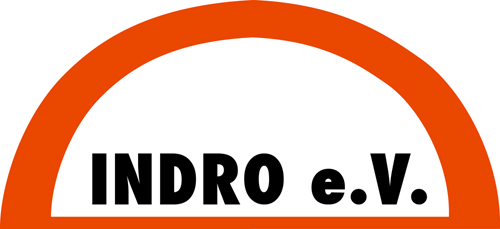The History of Methadone
Ralf Gerlach©: A Brief Overview on the Discovery of Methadone. INDRO e.V. Münster 2004
Methadone was first synthetized in 1939 at the pharmaceutical laboratories of the I.G. Farbenkonzern, a subsidiary of the Farbwerke Hoechst, Frankfurt am Main, Germany. It was the product of a long and continuous research chain in the area of synthetic antipyretics and analgetics that had already been initiated in the early 1880s (e.g. Antipyrin® 1884, Pyramidon® 1897, and Novalgin® 1921). At the end of the 1920s the Hoechst scientists had focussed their research on the development of medications with both painkilling and spasmolytic properties (MOLL 1990; HOECHST AG 1992) and a first major progress in research was made in 1937 when the Hoechst chemists Eisleb and Schaumann discovered Pethidin/pethidine (1-methyl-4-phenyl-4-carbaethoxypiperidin), an effective opioid analgesic drug which was launched in Germany in 1939 under the trade name Dolantin® (SCHAUMANN 1952). In the course of ongoing research on synthetic opioids the Hoechst scientists Bockmühl and Ehrhart discovered a number of basically substituted diphenylmethanes acting both analgesically and spasmolytically. One of these compounds was 2-dimethylamino-4,4-diphenylheptanon-(5), which they numbered Va 10820 (BOCKMÜHL/EHRHART 1949; SCHAUMANN 1952). Va 10820 was to become known as methadone no sooner than 1947.
Due to the huge number of compounds discovered in 1939 Ehrhart started pharmacological tests with Va 10820 only in early 1942 (after a lot of other compounds had already been tested). Clinical tests still followed in the autumn of the same year (SCHAUMANN 1952). Compound Va 10820 was also provided to the military, the German Wehrmacht, for additional testing under the code name Amidon (PRESTON 1996). To date, there is no evidence that Amidon was handed over to the Wehrmacht in appreciable quantities. Since at Hoechst the production level of Amidon was very low, the top priority of opioid production lay with Pethidin, only an insignificant quantity could have been handed over to the military. All known sources clearly indicate, that after the first clinical tests had been completed, Amidon was not used during World War II – most likely, both the Hoechst scientists and the Wehrmacht doctors used inadequate doses in the experiments causing undesirable side effects: There is no evidence that Amidon had been used as a painkiller in casualty clearing stations or military hospitals. Further, the drug had not been approved for commercial production. Thus, the civic medical sector had also been excluded from being supplied with Amidon.
For the reasons given above, it is dishonest to state that “methadone” had widely been used during the war as a painkiller and a substitute for morphine under the trade name Dolophin (Dolophine), allegedly derived from Hitler’s first name Adolf. Also, stating that Amidon had been called Adolfin (Adolphine) among soldiers and civilian people is entirely unfounded. In fact, the name Adolphine was created in the US in the early 1970s:
“The invention of the term ‘Adolphine’ by New York City street linguists in the 1970s was an apparent attempt to discredit methadone treatment by those unsympathetic to it, using the Hitler association” (BYRNE 1995, 20; see also KLEBER 2002).
The discovery of Pethidin (pethidine), Amidon and several other synthetic opioid analgesics must not be seen isolated from Hitler’s attempt to achieve in Germany a state of economic and industrial independence of other countries (autarchy), as pronounced in 1936 when Hitler introduced his war-preparatory Four-Year-Plan (KÜHNL 1977; PIEPER 2002). As a consequence of the re-organisation and re-structuring of the German trade and industry there was also a stepping up of efforts to become independent on the import of opium needed for the production of morphine.
Of course, the discovery of medications cannot be ordered by politicians or military forces. Acting together were both intensified research activities within the scope of the Four-Year-Plan as well as decades of research in the field of analgesics. The more financial support and manpower, the more intensive research is possible and the more chances are there to make discoveries.
After the war, all German patents, trade names and research records were requisitioned and expropriated by the allied forces. The records on the research work of the I.G. Farbenkonzern at the Farbwerke Hoechst were confiscated by the U.S. Department of Commerce Intelligence, investigated by a Technical Industrial Committee of the U.S. Department of State and then brought to the US.
It was only in 1947 that Amidon was given the generic name “methadone” by the Council on Pharmacy and Chemistry of the American Medical Association (COUNCIL…1947). Since the patent rights of the I.G. Farbenkonzern and Farbwerke Hoechst were no longer protected each pharmaceutical company interested in the formula could purchase the rights for commercial production of methadone for just one dollar (MOLL 1990). Commercial production was first introduced in 1947 by the US company Eli-Lilly. Only then methadone was given the trade name Dolophine, derived from the Latin dolor (pain) and finis (end). Many companies in other countries soon followed and methadone was given many trade names, some of which still exist: Adanon®, Adolan®, Althose®, Amidone®, AN-148®, Anadon®, Biodone®, Butalgin®, Diskets®, Dolamid®, Dolophine®, Dopridol®, Eptadone®, Heptadon®, Heptalgin®, Heptanal®, Heptanon®, Ketalgin®, Mephenon®, Metasedin®, Methadone®, Methadose®, Methox, Miadone®, Pallidone®, Petalgin®, Phenadone®, Physeptone®, Sedo Rapide®, Symoron®, Tussol®, Westadone® (SCHAUMANN 1952; GERLACH/SCHNEIDER 1994).
As a consequence of post-war events (e.g. the I.G. Farbenindustrie was broken up by the allies) the newly founded Hoechst AG could only in January 1949 launch methadone on the German pharmaceutical market under the protected trade name “Polamidon”. The patent approval of Polamidon was given on February 2, 1953. It took four years to have the patent problems clarified with the relevant US authorities.
Main source of reference:
GERLACH, R.: Methadon: Von der Entdeckung zur Erhaltungsbehandlung – Auflösung einiger „historischer Mythen“. In: Schneider, W./Gerlach, R. (eds.): DrogenLeben. Verlag für Wissenschaft und Bildung. Berlin 2004, 29-53
References given in overview above:
BOCKMÜHL, M./EHRHART, G.: Über eine neue Klasse von spasmolytisch und analgetisch wirkenden Verbindungen, I. In: Justus Liebigs Annalen der Chemie 1949;561(1):52-85
BYRNE, A.: Methadone in the Treatment of Narcotic Addiction. Tosca Press. Redfern 1995
COUNCIL ON PHARMACY AND CHEMISTRY OF THE AMERICAN MEDICAL ASSOCIATION: Methadon, Generic Term for 6-Dimethylamino-4,4-Diphenyl-3-Heptanone. Report of the Council of Pharmacy and Chemistry. In: Journal of the American Medical Association 1947;134:1483
GERLACH; R./SCHNEIDER; W.: Methadon- und Codeinsubstitution. Verlag für Wissenschaft und Bildung. Berlin 1994
HOECHST AG: Zur Substitutionstherapie mit Methadon in der Behandlung Opiatabhängiger. Frankfurt/M. 1992
KLEBER, H.D.: Methadone: The Drug, the Treatment, the Controversy. In: Musto, D.F. (ed.): One Hundred Years of Heroin. Auburn House. Westport 2002, 149-158
KÜHNL, R.: Der deutsche Faschismus in Quellen und Dokumenten. Pahl-Rugenstein. Köln 19772
MOLL, S.: Strafrechtliche Aspekte der Behandlung Opiatabhängiger mit Methadon und Codein. Peter Lang. Frankfurt/M. 1990
PIEPER, W. (ed): Nazis On Speed. Drogen im 3. Reich. Band I. Werner Pieper & The Grüne Kraft. Löhrbach o.J. (2002)
PRESTON, A.: The Methadone Briefing. ISDD. London 1996
SCHAUMANN, O.: Die neuen synthetischen Analgetika. In: Archiv für experimentelle Pathologie und Pharmazie 1952;216:48-77
© Ralf Gerlach, INDRO e.V., Münster, Germany, September 7, 2004
Citation: Ralf Gerlach: A Brief Overview on the Discovery of Methadone. INDRO e.V. Münster 2004. Web-publication available at www.indro-online.de
Contact details:
Ralf Gerlach
Deputy Director
INDRO e.V.
Bremer Platz 18-20
D-48155 Münster
Germany
Phone: +49 251-60123 or +49 2571-582765
Fax: +49 251-666580

